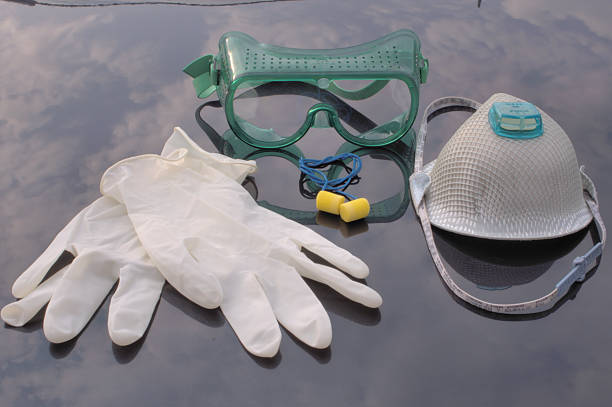That PPE cabinet Malaysia will soon be filled by personnel protective equipment necessary for your own protection in your own lab. There is no lab without dangerous chemicals, agents or even equipment, unless your lab is only built for kicks because you want a so-called proper place to play with 4M science toys for children.
There are several protective equipment that you must minimally equip your lab with before you can carry out any of your experiments. Under no circumstances should you do so anyway unless you want to speedrun in having the shortest scientific career of your life.
Eye protection
As your eyes are the most precious organ on your skin, or at least on your face, you must ensure that nothing foreign, especially chemicals, go into them at all. Wear lab goggles, even if you are wearing prescription glasses as they should cover over them too just fine without impeding your vision.
There are also safety glasses that you could alternatively buy for a less bulkier protection for impact damages. Despite having side shields for splash protection, it is still best to get safety goggles instead when you can afford them.
Face protection
Certain procedures call for face protection rather than just your eyes, thus face shields should be your priority too. Keep in mind that you must wear face shields over your goggles, not instead of them.
Another kind of face protection would be gas masks, which is very important when working with chemicals even behind the glasses of fume hoods. Make sure that your filters have adequate air to breathe in, otherwise replace them with new ones that match with your mask’s model.
Lab coats

Lab coats don’t just make you look like a legitimate, stereotypical scientist, you know? They are also a vital form of personal protection, whether you are protecting your face and eyes or not. Lab coats can protect your clothes and skin from any chemical splashes so you have some time to wash them off with your lab’s emergency shower.
Your lab coats should also be made to resist flammable materials to lessen the chance of getting burned by one. Furthermore, they should cover beyond your knees, and not any lesser unless you are unlucky enough to warrant a knee replacement surgery.
Gloves
As your hands are the gears that truly keeps the experiments moving, you must at least protect them with chemically resistant gloves. Latex gloves may be used as they commonly are, but they are not resistant to many solvents you may have in your lab. Plus, many industries no longer put latex gloves to use. Get nitrile gloves instead.
You will likely use disposable gloves, so when removing them, be careful that the contaminated exterior does not touch your skin at all. Dispose them in appropriate containers and wash your hands after using your gloves for the day.
Do not wear your gloves outside your lab or to handle devices like computers, tablets, phones and so on. You will spread the contaminants in them and affect your bare hands the next time you touch anything that you did with your former gloves.

